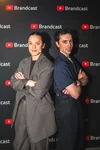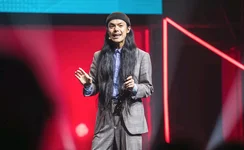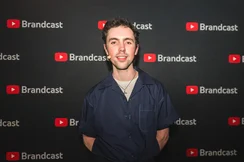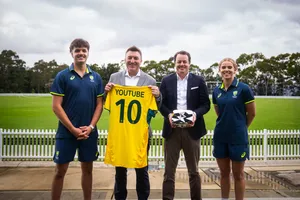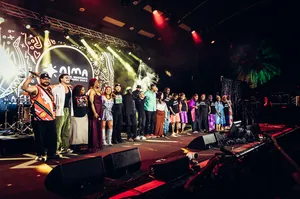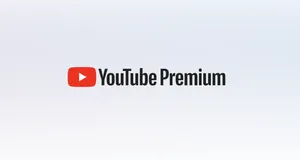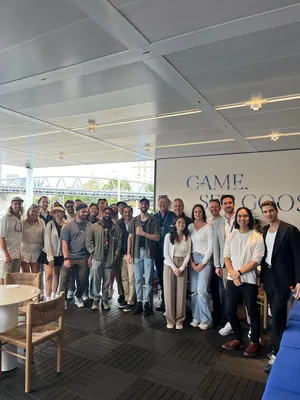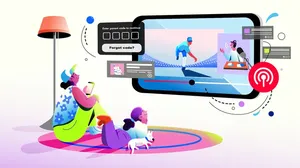YouTube is video for all
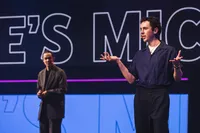
Editor’s Note: Last Thursday night, YouTube Australia hosted Brandcast in Sydney. The following is the address from Ashley Chang, Culture & Trends Lead for APAC and YouTube creator Mike’s Mic.
Ash: Hello everyone! My name is Ash and I lead YouTube’s culture and trends team where we try to understand what’s popular on YouTube and why. And that’s both a simple and difficult proposition. On the one hand it’s easy because YouTube is the place people go to watch the videos they love, right? But on the other, it’s hard because no one person can have an exhaustive view on what YouTube is. I mean, is it an ecosystem, a platform, a community? Is it the world’s biggest entertainment library? Its most democratic university? Or is it, quite simply, the world on video?
Over the course of tonight, you’ll hear about why YouTube matters to brands – but what I want to talk about is why YouTube matters to culture. And quite simply, it matters because YouTube and digital video IS the very fabric of culture. It’s what constitutes it, it’s the foundational element of fandom and expression and storytelling. It’s like this cultural matter that’s all around us, all of the time and yet the true impact of video can’t be discerned by the naked eye alone.
For one it’s hard to quantify the astounding breadth and depth of content here. The modern Australian audience is super diverse and so is the content they watch – and on this platform no matter what you’re interested in or how you identify, there’s something for everyone.
YouTube is video for all – all users, all creators, and in a world that’s less top down than ever, it’s video for all tastes. The absence of gatekeepers on YouTube means that value isn’t determined by any one person in a boardroom. It’s determined by everyone. Whether you’re into gaming or gardening, entertainment or economics, the spectrum of content on YouTube represents the entire spectrum of human interest and identity. This can span a Queensland creator racking up millions of views by wordlessly making structures using primitive means, to celebrities entering the seventh circle of hell while eating increasingly spicy chicken wings.
Here’s another way to think about it: television content is perceived to be high quality but is curated, right? And there’s only so much content that can be programmed. Social media, on the other hand, has tonnes of diversity with every topic imaginable, but it has very little depth. YouTube is the bridge between those worlds, a platform with a truly staggering diversity of high value content that is personally relevant to those who watch it.
An example I absolutely love is Mike’s Mic, a Melbourne based creator with over 900k subscribers who makes these unhinged feature length recaps of TV shows like Lost and Gossip Girl and he just might be one of the most influential pop culture commentators in the world today.
See? YouTube is a place where diversity thrives. But you know what? Don’t take my word for it.
Mike: Thank you Ash. Hi everyone, I’m Mike. What I do on YouTube I couldn’t do anywhere else. And what I’ve achieved wouldn’t have been possible without YouTube, either. I exist on that very bridge that Ash mentioned, right between fully produced, TV-quality content, and the content that we normally associate with ‘social media’.
I love to make lengthy videos talking about my favourite movies and TV shows, typically around 30 minutes long and getting up to three hours, per video.
If you’re wondering why I chose YouTube, let me break it down for you. The goal of my videos is to provide an in-depth analysis of whatever I’m watching – so that wouldn't work exclusively in short form video. So, why not a podcast? Well, if I’m talking about Glee for two hours and you haven’t seen Glee, it’ll be pretty rough for both of us. The sentence, “There’s a gas leak in the choir room which causes Blaine to hallucinate that everyone in the Glee club is a puppet”, definitely requires some sort of visual aide. So, when I make my content, I make visuals to supplement the scripts I write, which is why it thrives in video.
Additionally, I like to present an entire discussion and then let people engage with it in whatever way suits them best. That could be all at once, or in chunks, on the train alone, or at watch parties with friends. But there’s also the comment section, which is just as important for discussion. These shows and movies are 10-15 years old, and a large chunk of my audience grew up watching them. People love to talk about what they remember – their favourite characters, the most insane plot lines… so the comment section becomes a continuation of the video through these discussions.
Ash: I love that. As Mike proves, people on this platform matter because they move culture. They’re authentic, knowledgeable, passionate, trusted and influential. That’s why you’ll see YouTube creators host the red carpet coverage of the Met Gala or for the Golden Globes. In fact, according to Ipsos research, 55% of Gen Z agree that they’d prefer to watch creators breaking down a major event rather than the event itself. 1
This is also a place where superfans can become professionals. Aussies who have been posting content on YouTube since 2013 have now released a horror film that is currently 94% fresh on Rotten Tomatoes. And we’ve seen other creators go from making musical comedy skits to feature films, and an Oscar nominated stop motion film started 12 years ago as a short film originally posted to YouTube.
YouTube creators are just built different. One of my favourite YouTube moments ever happened when a probing question helped Elon Musk make a vital realisation about a new rocket.
So YouTube really opens doors, not just for audiences but for creators. Mike, question for you, as a creator, does this all track with how you’ve experienced the platform so far?
Mike: For sure. In 2017, I used to work a software engineering job, go home, cook dinner and then sit down to make YouTube videos as a hobby because I just loved it so much. Little did 2017 me know that the progression of that would be HBO flying me across the world to host a red carpet premiere.
In 2021, during the months-long Melbourne lockdowns, I started working on my first super-long-form project: a script for a two hour long YouTube video detailing the iconic characters, plot complexities and plot holes of one of my favourite TV shows, Pretty Little Liars. After seven months, hundreds of metres of string, seven hours of content and 14 million views, I covered the entire 160 episodes. Somewhere in that seven month process, HBO announced a spin off Pretty Little Liars, titled Original Sin, and since I’d become somewhat of a subject matter expert in the area, they wanted me to be involved in promoting the new show. Not only did they sponsor a deep-dive video on the first few episodes of the show, HBO actually flew me out to LA to host the show’s red carpet premiere. (By the way, it was my first time in the USA!)
To top it all off, I got to meet the cast of the new show at the premiere who told me that before they started filming, they had a sleepover and watched my videos on the original series, to get a refresher on what had happened.
And this was all profiled in New York Magazine.
Ash: Wow. This is exactly what I’m talking about. Influence.
The single most important person in global phone sales is not someone you’d find on TV or social media – it’s this guy. The people and content and opinions that truly matter, that truly shape culture, they live on YouTube.
YouTube is also truly representative. As an Asian person, I won’t lie, growing up in Australia I didn’t see many people that looked like me in traditional media. But on this platform some of the biggest and most iconic Australian creators are people of colour. People who look like me.
Speaking of diversity, YouTube content represents every screen and format imaginable. Whether a creator wants to make shorts, or livestream or do a podcast, YouTube allows creators to make content how they want. And it allows viewers to consume it how they want, whether that’s on mobile, desktop or television. What that really means is that YouTube is video for all contexts or consumption states. And some of those contexts can be surprising, even to creators.
Mike: That’s very true Ash! One of the coolest parts of what I do is seeing how people engage with the content I make. I put a lot of effort into my content, and it’s nice to see how fans respond when I finally release longer videos. Through the process, I fully allow myself to live out my pop star fantasies by making a “roll out” much like Lady Gaga would do for a new album. I’ll set a date, make teasers, and then when the video finally drops, I’ll get dozens of people sending me pictures of the watch parties they’ve organised with their friends. I’m talking on the TV, snacks, pyjamas, the full set up. I also see a lot of people video calling each other and then pressing play on the videos so they can watch together even though they’re not in the same room. I never would’ve thought that my videos would be such an event in that sense but it’s truly one of my favourite things about what I do. Ash, I’m curious, what kinds of things have you seen?
Ash: In the live space we’ve seen sports publisher DAZN livestream every match of the women’s UEFA champion’s league, globally, for free on YouTube. We’ve seen musicians go from livestreaming in their living room to being livestreamed by Coachella. And we’ve seen networks publish full episodes of original programming on their YouTube channels.
Elsewhere, South Korean girl group NewJeans launched a dance challenge for their track Super Shy on YouTube Shorts and in the process generated hundreds of thousands of creations and hundreds of millions of views.
Mike: This is something I’m very qualified to talk about! I’m a huge K-pop fan. I go to K-pop dance classes twice a week and I’ve actually made a YouTube video called “discovering K-pop at age 25”. You’ll regularly find me watching YouTube dance tutorials. I think K-pop is an excellent use case for showcasing the power of YouTube content, because K-pop groups leverage every aspect of the platform when they’re releasing a new single or album. They’ll make Shorts to show off the chorus choreography, release multiple music videos, performance videos, hour long live streams from the idols, and I love all of it! But K-pop isn’t all I watch on YouTube. Right now, I’m learning how to write screenplays as well as watching 2000s music videos and performances, which don’t really exist anywhere else on the internet – so it’s cool that YouTube is essentially preserving pop culture history.
Ash: I think what Mike is getting at here is something that truly sets YouTube apart from almost every other form of media that exists and that’s the truly insane amount of utility it has. YouTube is video for all purposes. Whether that’s learning how to build a house, how the universe works, or how to learn accents.
On a personal level, I turned to YouTube when I was diagnosed with ADHD earlier this year and the content I've watched and the comments I've read have helped me learn how to navigate neurodivergence. But I also use YouTube videos to help me work. This includes brown noise, nature sounds and lofi hip hop videos. Often at the same time. I also use visual aids like timers and videos of people studying to motivate me to do the same. And I’m not the only one, millions of people use YouTube videos every day to help them exercise, study, clean and even get to sleep. It’s astonishing what a video can do and what it can mean to someone. It’s a portal that can turn any space into a gym, a cinema, a national park, a classroom, a stadium, a stage, another world.
YouTube matters because it shapes culture, but it really matters because it shapes people. It’s shaped me. More than any other platform, the videos I watch on YouTube have made me the person I am today. It taught me how to edit video and become a better public speaker, it gave me a love of dance, it entertains me, soothes me, inspires me. YouTube is unlike any other platform on the planet because it’s video for all – all users, all creators, all tastes, all contexts and all purposes. That’s why YouTube matters to me, that’s why it should matter to you and that’s why it matters – truly matters – to over two billion people across the globe. But don’t take my word for it. More than half of Australians agree that if they could keep only one video app, it would be YouTube. 2 That tells you everything you need to know about what truly matters to audiences. My question is this – what truly matters to you?
